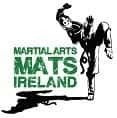Tips to Purchase Rubber Gym Mats
Rubber gym mats are some of the most versatile gym flooring available on the market. Forged in a crucible of high heat and tonnes of pressure, rubber tiles provide a quality surface for both commercial gyms and home gyms. Rubber mats offer a perfect surface to place workout equipment on, whilst also providing an ergonomic support for the athletes who train on it. There are many uses for rubber mats, and in this article, we will address:
- The difference between vulcanised and non-vulcanised rubber gym mats
- The durability of rubber mats
- Different surface textures of rubber gym flooring
- How to install rubber mats
Vulcanised in non-vulcanised rubber mats
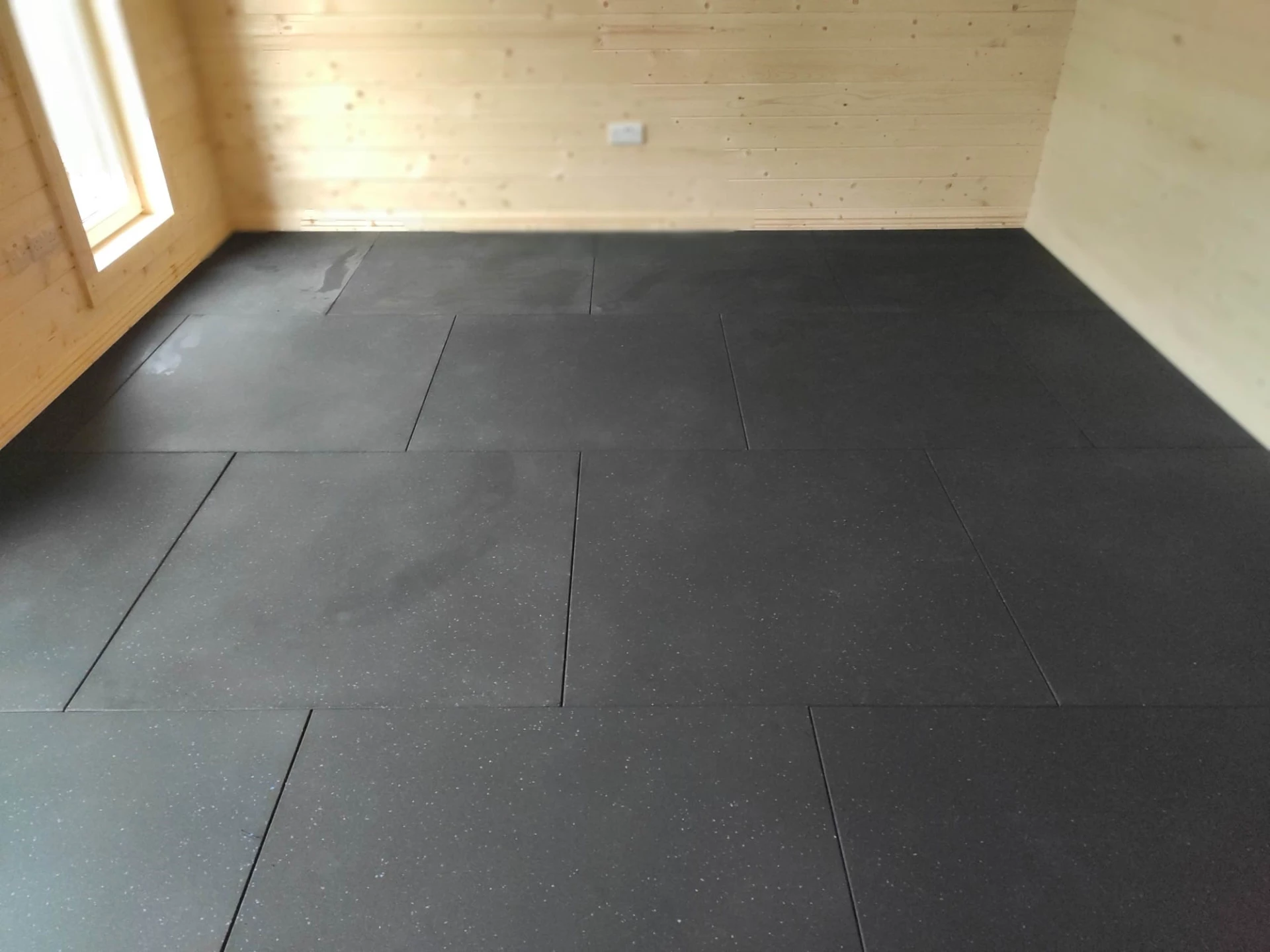
In order to understand more about rubber mats, it’s important to understand how different mats are produced. For example, the best quality rubber mats are produced through vulcanisation, the process which manufacturers use to hardenthe polymers within rubber. The old way of doing this was to combine natural rubber with sulfer to create a waterproof, durable material. Now it can mean curing synthetic rubber with silicone or neoprene.
Vulcanization involves curing polymers and creating a cross-linked structure which increases rigidity and durability. After a curative has been introduced to the rubber, manufacturers use high amounts of heat and pressure to turn virgin rubber into vulcanised rubber. From there, the newly vulcanised rubber can be poured into moulds and shaped into whatever the customer needs.
Vulcanized rubber is considered a superior rubber. It is waterproof, up to 4 times stronger than non-vulcanized rubber, and holds its shape for a longer period. This makes it perfect to use for weight training facilities, rubber gym flooring, sports facility flooring, and shop flooring
Devulcanisation and Revulcanisation
One of the best things about rubber mats is that it is easy to recycle, and can be used over and over again. In order to recycle rubber, you need to put it through the process of de-vulcanization, which reverses the vulcanization process. Then, the rubber mats are chewed up into small, easy to melt pieces.
Revulcanisation is the process of melting down recycled rubber, in order to make it more durable. Re-vulcanized rubber possesses the same characteristics as vulcanized rubber.
Martial Arts Mats Ireland has many vulcanized rubber gym mats for you to purchase, including:
- RUBBER BLUE FLECK GYM MATS WEIGHT TRAINING 1M X 1M X 15MM
- WEIGHT LIFTING GYM MATS RUBBER AMEOBIC 1.83M X 1.22M X 17MM
- WEIGHT LIFTING GYM MATS RUBBER 0.91M X 1.22M X 17MM STUD DOT
Durability of rubber gym flooring
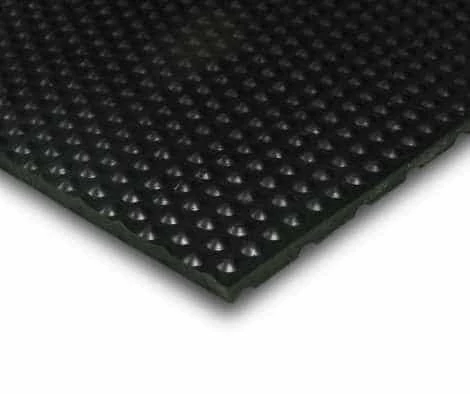
Rubber flooring can absorb tremendous amounts of pressure, redistributing the force, and safely protecting the floor underneath. This means that when you’re dropping tremendous amounts of weight on the rubber gym floors, the force can be dissipated out, preventing chips and cracks on your barbell. When you’re training on rubber floors, you may notice a certain degree of ‘springiness’, and the weights may even bounce when you drop them.
One of the best things about a rubber mat is that it can resist scuffs, dents, and gouges. In addition, rubber mats provide great traction, allowing athletes to train on them even when wet. The last outstanding characteristic of rubber mats is that they have sound insulating properties, allowing you to dampen sounds that may travel through floors.
If properly maintained, rubber mats can last up to 20 years. This means that by outfitting your gym with rubber mats, you can invest in a quality product which will survive the rigours of regular gym use.
The different surface textures of rubber mats
At Martial Arts Mats Ireland, our rubber mats have three different types of surface textures:
- Amoebic
- Stud dot
- Smooth
Amoebic surface texture
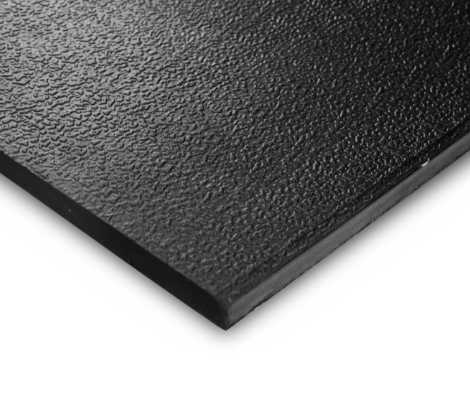
Rubber mats with an amoebic surface texture feature thousands of raised shapes, many of which resemble an single-celled amoeba. They create a mosaic pattern of unique shapes, which provides increased traction and ergonomic properties. Amoebic mats are great to use within horse barns and cattle barns specifically because they offer increased traction. Even that bit of extra raised surface texture can provide increased traction for animals.
Both the stud dot and amoebic mats feature a drainage for a furrow on the bottom, deep grooves on the underside of the mat which provide channels for moisture to flow away from the centre. If you’re using these outdoors, the drainage furrows provide channels for the water to flow, preventing pooling and ice pockets underneath the mats.
When used in an agricultural setting, some farmers have found it beneficial to flip the mats over and use the drainage furrows as the top surface texture. This might add an increased amount of traction, as the deep grooves provide a place for the animals to dig their hooves into.
Whether you’re using it for a martial arts training centre, a home gym, a workshop or garage, or even in a barn, play around with the different surface textures of the mats to find the perfect one for you.
Stud dot surface
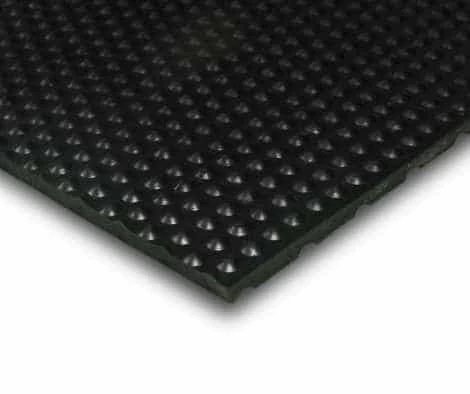
One step up from the amoebic surface texture, stud dot mats offers greater traction and nonslip properties. Each individual stud dot is raised almost 4 mm off of the main surface of the mat, which makes these products perfect to use outdoors as walkway mats or for an outdoor dog run. Even with slush, rain, snow, and even ice, you can expect to get a good grip on these mats. No longer will you need to worry about slipping on ice in the winter.
Smooth surface texture
One of the most common types of mats available on the market, a rubber mat with a smooth surface texture is great to use for an athletic training centre. Sometimes, the amoebic or stud dot surface texture can make it difficult to place heavy equipment on top of it. These mats cause an uneven surface, causing the mats to sit precariously. The smooth surface texture of these mats is great to use for the inside of gyms, as they provide a flat surface for workout equipment to go on, as well as for people to lay down and train on them.
How to install rubber gym mats
Rubber gym mats are incredibly easy to install, and even those who have very little background in do-it-yourself projects can handle the task fairly easily. Follow the steps below, and you can learn how to install rubber mats in your gym:
- Allow the mats to “season”
When you first open the package, you may notice that rubber mats have an acrid, unseemly odour. One way to get rid of that odour is to allow the mats to “season” by leaving them outdoors. Leaving rubber mats in direct sunlight can help them lose a bit of the smell. Simply leave the mats outdoors overnight and you can rid yourself of most of the harmful odour.
- Start in the corner and work your way from left to right
Rubber mats usually fit together fairly easily, depending on the type of mat that you purchase. Some mats have jigsaw connector pieces which lock into one another, whilst other mats simply sit flush with one another. One of the best tips is to start in the left corner of the room, and work your way from left to right, top to bottom. You may need to remove the baseboards, so that you can tuck the mats up in underneath of them.
- Cut the mats with a knife or jigsaw
Lastly, once you get to the edge of the wall, cut the mats back using either a sharp utility knife or a jigsaw. Although it may require more upper body strength, using a sharp knife is the easiest and most handy way to cut rubber mats. If you’re looking for a more high-tech way to cut through the mats, use a jigsaw.
Conclusion
Outfitting your training centre with gym flooring can help to provide safety and traction for the athletes who train in your gym. Even if you’re using it for your own home gym, you can rest assured knowing that your subfloors are protected, and you can safely train on your mats without worrying about slips or trips. Do your best to assess the surface texture of the mats before purchasing them, as you can make an informed decision on which mats work best for you in your situation.
Author: David Van Kooten
